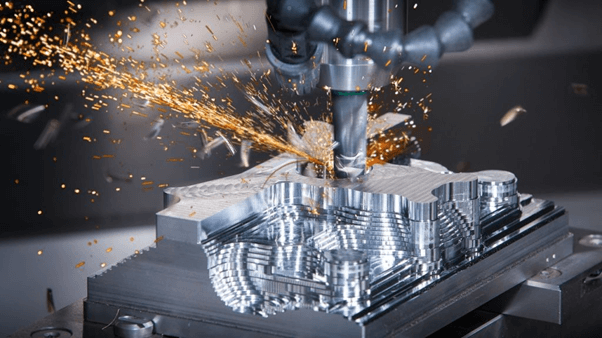As we discussed in the earlier chapters of our series, CNC machining refers to a careful manufacturing process where there is pre-programmed computer software that dictates every movement of different factory tools as well as machinery. Let us look at CNC machining services and prototype specialists.
Usually, the process may be utilized in
controlling different complex machinery, including grinders as well as and
mills. In the long run, with CNC machining and the 3-dimensional cutting projects
may be accomplished in one set of different prompts.
CNC is the abbreviation for computer
numerical control. It is also prominent in the industry of enhancing different products
to look good in all ways. There are; however, several limitations appended to
the CNC processes.
To you, as the onlooker, this system can
resemble a significant regular set of different computer components. However,
the software programs, as well as consoles employed in the CNC machining, play
the role of distinguishing it from various elements of computation.

Fundamental
Details Of CNC Machining
To comprehend the basics of a CNC
machining, you need to know how it works. To begin with, the CNC system is first
activated. After that, the required cuts will be programmed into the software.
That software is going to be dictated into a corresponding tool.
It will also be dictated into the
machinery, which can carry out different dimensional tasks. The coding
generator in the system will, most of the time, assume that the mechanisms are
flawless. This is regardless of the possibilities of the occurrence of
different errors, which should definitely be more significant when a CNC
machining is directed to cut into more than a single direction at the same
time.
Typically, the placement of your tool in
the numerical control system will be outlined using different series of inputs.
These elements are known to be part of the primary program for various CNC machines, which are
often fed into the memory of a computer. The code in itself is usually written
as well as edited using different programmers. For that reason, CNC systems
provide more than just the expansive computational capacity.
The best part about it all is that CNC
systems are not static. Therefore, newer prompts can easily be included in the
different pre-existing programs via a revised code.

Benefits
Of CNC Machining
The industry in charge of manufacturing
products highly relies on CNC machining. The operational elements of these
sectors include engineer-operated elements such as routers, vertical millers,
as well as shaping different machines. In the end, the advantages appended to
CNC machining imply that the operator-needed equipment has been replaced
entirely. Manufacturers of different types of products across various
industries will often choose the pros of CNC machining when it comes to the
fabrication as well as manufacturing applications of different products. This
is sole because CNC machining offers efficient as well as expedient production
capacities, which are perfect for the creation of large quantities of products.
Take-Home
In closing, CNC machining can be used in producing a variety
of metal as well as different plastic elements that may become a significant
part of the business. Several industries demand accurate yet sophisticated
cuts. Some of the industries include:
- Production
- Military
- Hospitality
- Dental
- Metalwork
- Electronics


